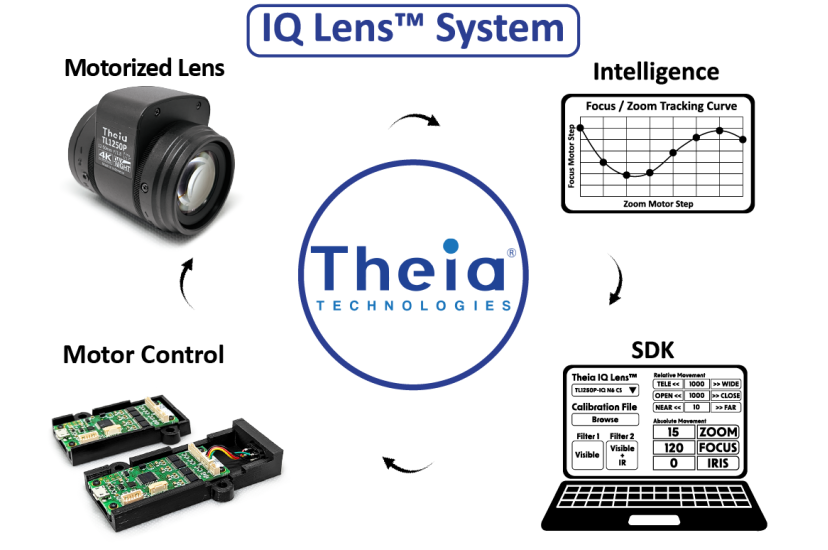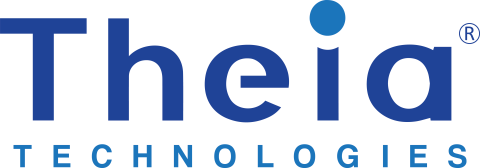The latest lenses and optics for imaging in 2025

Optics or lenses are an essential component of any imaging system (Credit: REDPIXEL.PL/Shutterstock.com)
Optics or lenses are an essential component of any imaging system in order to focus the image of the examined object onto the camera sensor. They can be used to remove parallax or perspective error, or provide adjustable magnifications, field of views, or focal lengths.
What are optics for imaging?
Made from transparent materials, such as glass or plastic, lenses can either converge (convex) or diverge (concave) light rays to create real or virtual images. These lenses are often combined in optical systems to enhance image quality, correct distortions, and adjust the field of view. Imaging involves capturing light rays from an object and directing them to form a visual representation on a surface, such as a camera sensor or the human retina. These optics are crucial in applications ranging from everyday devices like smartphones to specialised tools like telescopes and medical imaging devices, enabling accurate and detailed visual representations across numerous fields.
What are the applications for optics for imaging?
Lenses continue to evolve in order to be able to accommodate the changing needs of imaging systems for a variety of applications and use cases, with consumer electronics driving demand for video capture. Other important markets include automotive, medical, security and manufacturing, with sensors being developed in different sizes and designs.

Theia Technologies IQ Lens™ System
Theia’s IQ Lens™ System brings together a motorized 4K, multi-spectral lens, motor control board, calibration data, & software with GUI to form an intelligent, modular, highly configurable system. The remote zoom & focus enables applications with variable working distances like factory automation for Pick & Place robots, automated systems with embedded vision and in mobile applications like UAVs & AMRs used in logistics, agricultural monitoring, aerial mapping or law enforcement handheld cams.
It includes a python-based SDK and intuitive GUI reducing development effort & cost, speeding time to market using USB, UART or i2C protocols for fast integration. The calibration data provides intelligence to optimize image quality easing system setup including focus/zoom curve, focal length, aperture size, distortion, & relative illumination. The high-performance system enhances AI applications like ANPR, OCR & more. Theia’s IQ Lens™ System - Intelligent. Cost-effective. Fast. Just plain Smart!
Find out more detailed information about Theia Technologies IQ Lens™ System
SPONSORED BY

This demand is driving growth in the lens market, according to the latest figures from market intelligence and advisory firm, Mordor Intelligence, which cited the value of the global camera lens market at $6.25bn in 2025. This is expected to reach $8.57bn by 2029, growing at a compound annual growth rate (CAGR) of 6.5% during the forecast period.
What are the biggest opportunities for optics for imaging?
The report, Camera Lens Market Size & Share Analysis - Growth Trends & Forecasts (2025 - 2030), highlights one of the drivers as the convergence of traditional optical technology with artificial intelligence (AI) and computational photography. This is led by the smartphone market, where manufacturers are integrating professional-grade camera systems with advanced features like periscope zoom technology and adjustable physical apertures. The trend is so significant, says the report, that even professional photographers are adapting, with 64% now using smartphones for the majority of their work. The growth in 5G mobile subscriptions, expected to reach 5.3 billion by 2029, is further accelerating the demand for advanced imaging capabilities in mobile devices.
Another major driver, says Mordor, is the automotive sector, particularly in autonomous vehicles, where camera lenses are crucial in providing 360-degree visualisation and safety features. This is evidenced by strategic investments like LG Innotek's partnership with AOE Optronics in January last year, focusing on autonomous vehicle cameras and extended reality devices. The industry is responding to these demands through substantial R&D investments in advanced optical imaging technologies, while manufacturers are expanding their facilities and adopting innovative production techniques to maintain cost-effectiveness and meet the growing demand, particularly in markets such as China, where smartphone production reached approximately 1.6 billion units in 2022.
Optics for imaging on the market now
Vendors that offer lens technology include camera manufacturer Basler, which has its own range of standard and premium lenses. The standard product line is designed for fast cameras with a lower resolution. It has a good price/performance ratio, with lenses priced to correspond to the requirements of many cost-sensitive applications. The premium product line is available for more demanding applications, and the lenses offer high resolution, low distortion and low vignetting.
IDS is another example of a camera manufacturer offering its own lens line. The company’s C-mount lens series provides resolutions of 5, 8 and 10 megapixels, as well as focal lengths of 4 to 75mm and different optical classes. The lenses cover sensor sizes from ½-inch to 1.1-inch. The aperture and focus can be fixed mechanically if required, which ensures brightness and image quality remain constant, even if the lens is exposed to vibration.
Available from Edmund Optics is a range of imaging lenses for a variety of imaging needs, including telecentric lenses, liquid lenses, those with fixed focal length, zoom lenses, and shortwave infrared imaging lenses. A selection of imaging lens accessories is also available, including filters, and mounts or adapters for additional functionality.
Fujifilm offers a wide range of prime, zoom and telephoto lenses. Its most recent launch is the Fujinon GF35-70mm interchangeable lens for large-format cameras. Designed as a compact and lightweight zoom lens, it weighs around 390g, with a focal length range covering from 35mm to 70mm. The company expects the portable form factor to help broaden the scope of applications for GFX camera systems, equipped with a large format sensor.
Kowa lenses have been used for applications in a wide range of industries such as automotive, logistics, pharmaceutical and food. They perform tasks such as defect detection, surface inspection or shape and dimensional inspection.
Optotune’s focus-tunable liquid lenses are designed to provide a versatile, compact and cost-effective solution to the challenge of keeping products in focus under the camera or quickly scanning various objects at different distances. Thanks to the absence of translational mechanics, these lenses can focus within a few milliseconds, ensuring robustness and reliability with a lifetime of billions of cycles for use in applications such as quality control, packet sorting, box filling, palletising, barcode reading, robot vision and 3D image stacking.
Resolve Optics offers compact fixed and zoom lenses for vision applications including parts recognition, precise component placement, automated alignment and placement, and automated inspection of manufactured components. The company recently reported on its development of radiation-resistant optical modules and lenses for use in satellite camera systems or inspection cameras designed for use in nuclear reactors. Standard optical materials increasingly suffer from radiation ‘browning’ – meaning that image quality will deteriorate over time.
A recent addition from Schneider-Kreuznach to its range of Zirconia lenses is the Zirconia 3.3/90. Designed for line sensors, it has a common magnification 0.1x. The main fields of application are flat panel display and PCB inspection. It has a uniform imaging performance over the whole field of view and, like other products in the Zirconia series, it comes with a V48 mount.
Sill Optics provides a range of telecentric lenses for machine vision applications. The company offers products that include lenses with coaxial light coupling to entocentric macro and wide-angle lenses, and telecentric illumination. Recent additions include the S5VPJ0303 and S5VPJ0305 telephoto lenses, including a tunable liquid lens. They offer high-speed adjustment of focal length to compensate for working distance deviation.
Among its most recent developments in lenses, Tamron expanded its range of fixed focal length lenses for the machine vision market with the MA23 and MA111-VIR series. The MA23 series targets industrial inspection requirements with its small size and image quality optimised for shorter distances. The MA111-VIR series is optimised for larger sensor sizes and resolutions, with 1.1-inch sensor format and up to 24-megapixel resolution, addressing a large field of industrial and non-industrial high-resolution applications.
Theia Technologies combines American innovation with Japanese optics expertise to deliver high-performance optics that are designed to meet the exacting requirements of machine vision, intelligent transportation, security and other industrial imaging applications. The company’s portfolio includes lenses using its patented Linear Optical Technology to optically correct barrel distortion in wide angle images. Theia also designs and produces custom optics to meet clients’ specific requirements.
Thorlabs offers a wide variety of C-mount camera lenses for machine vision, including standard fixed lenses, zoom lenses, high-magnification zoom lenses for macro applications, modular zoom lens components, and telecentric lenses. These lenses are compatible with all of the company’s CCD and CMOS cameras. Thermal imaging lenses are available to focus infrared light without introducing spherical aberration, and the company can provide objective, scan, and tube lenses for use in constructing optical systems for machine vision applications.
This is not an exhaustive list. If you provide optics or lenses for imaging and would like your company to be included, please let us know at: editor.imaging@europascience.com

